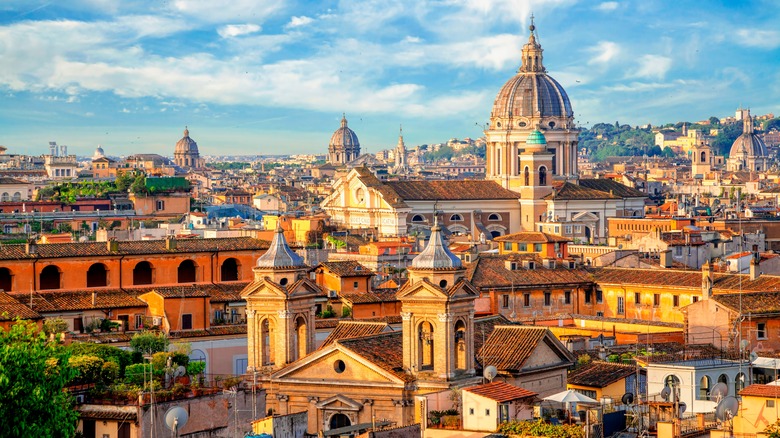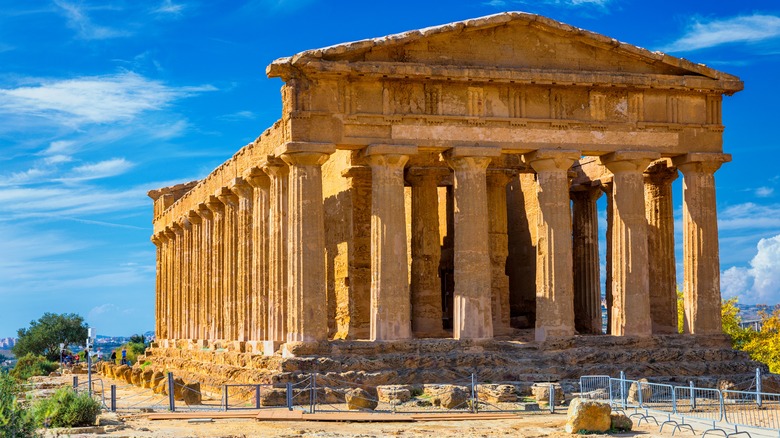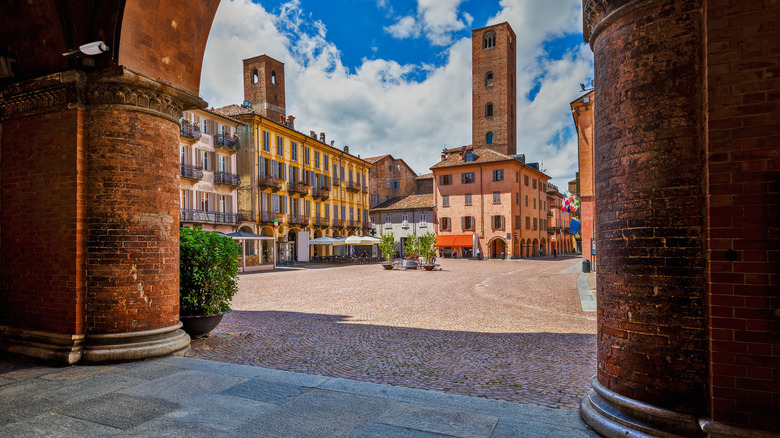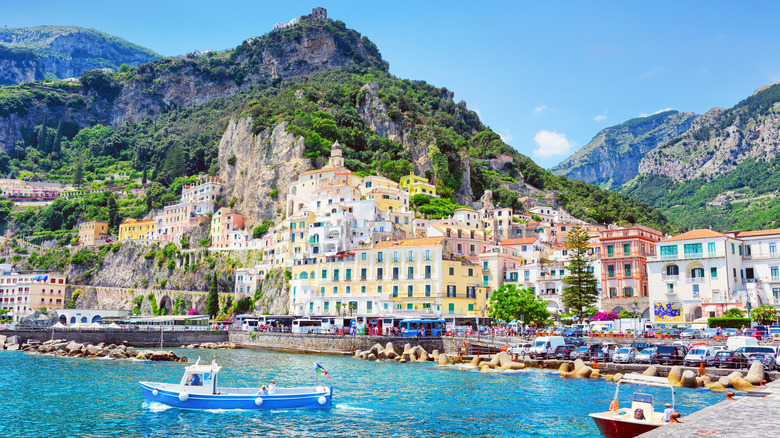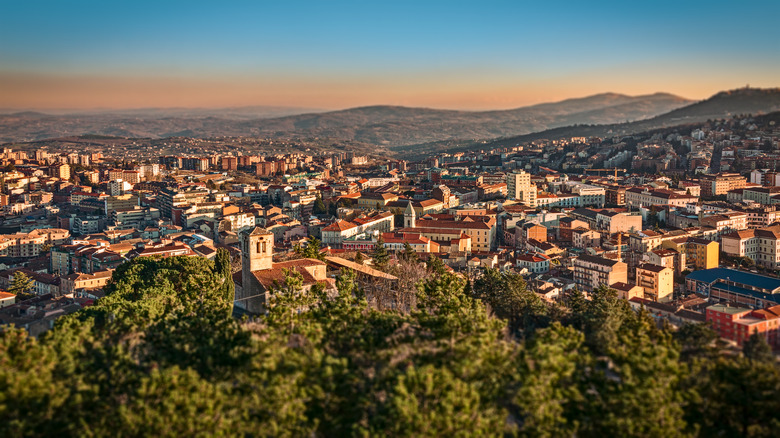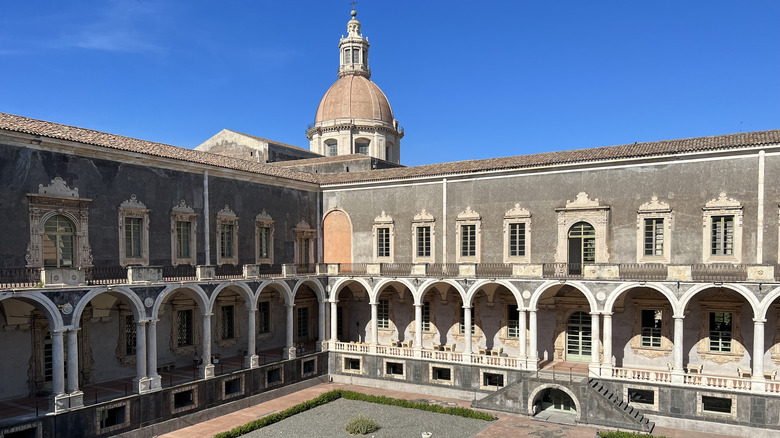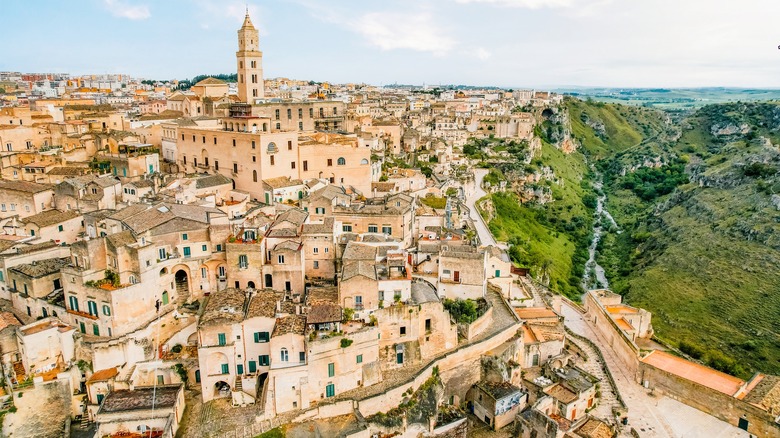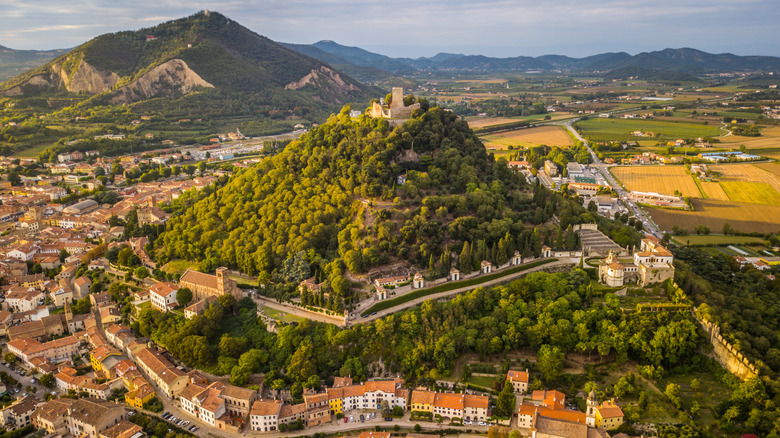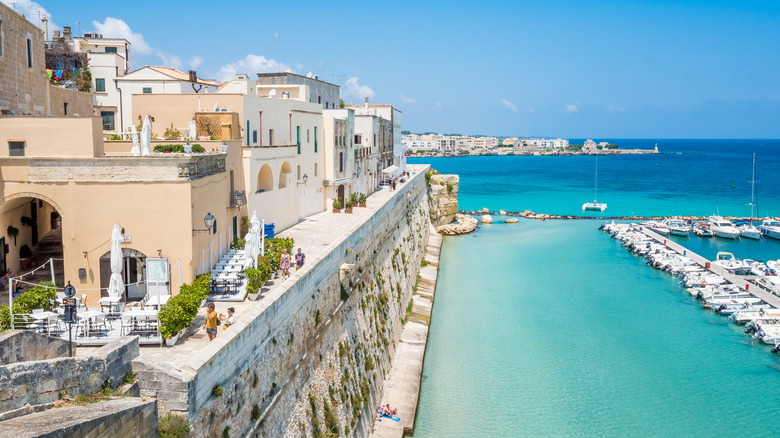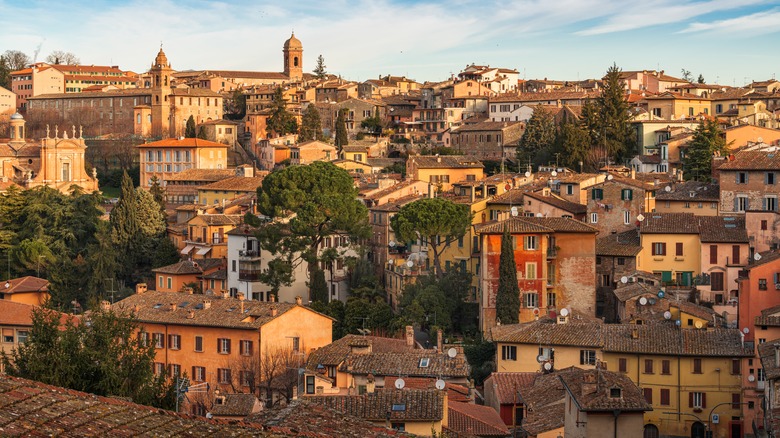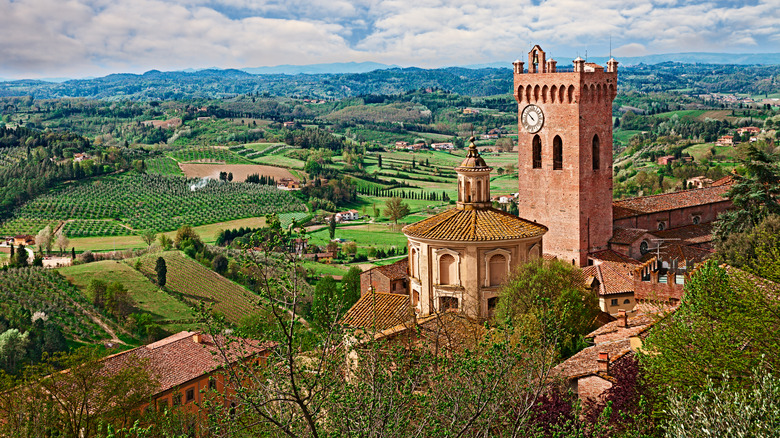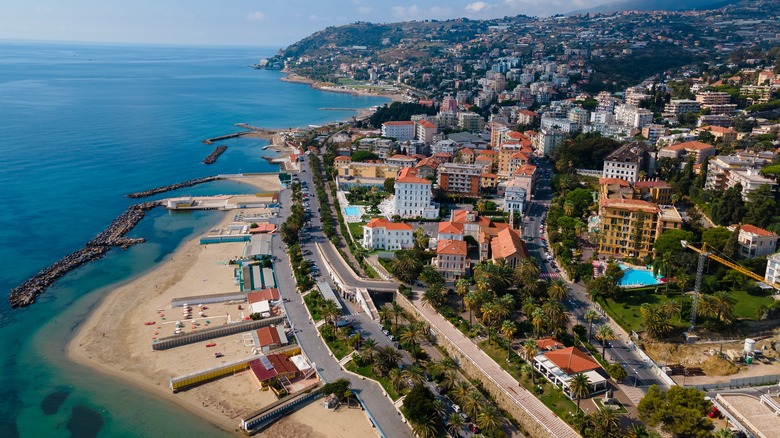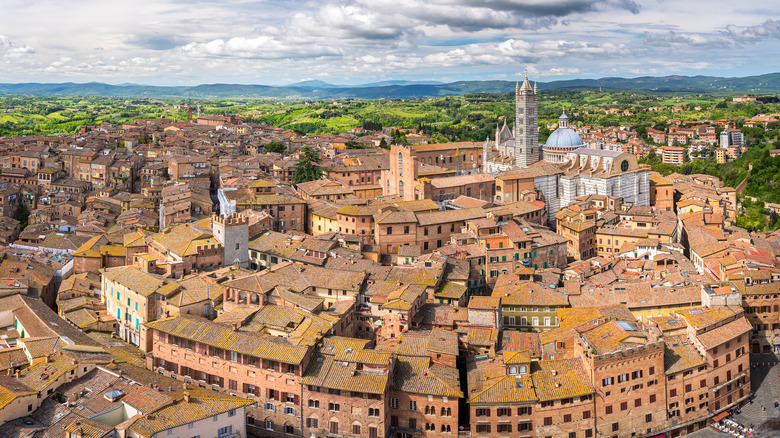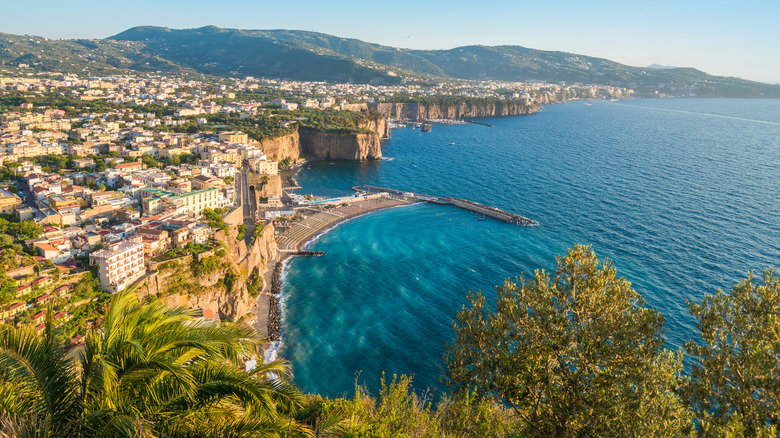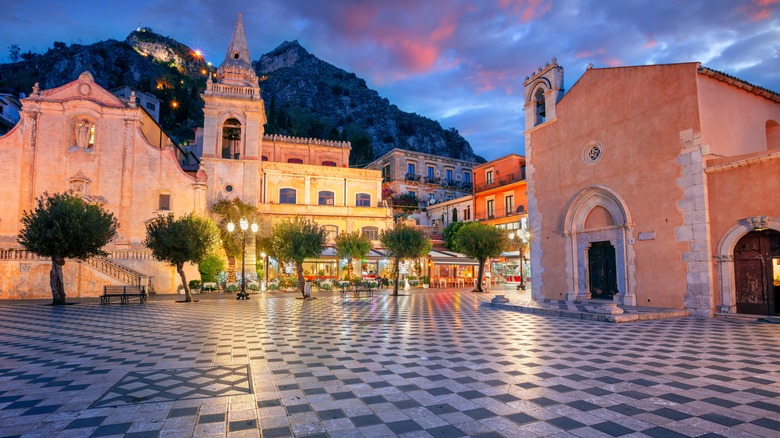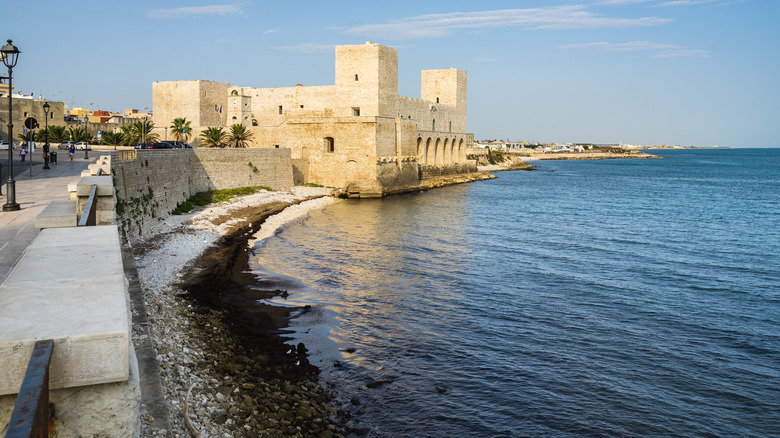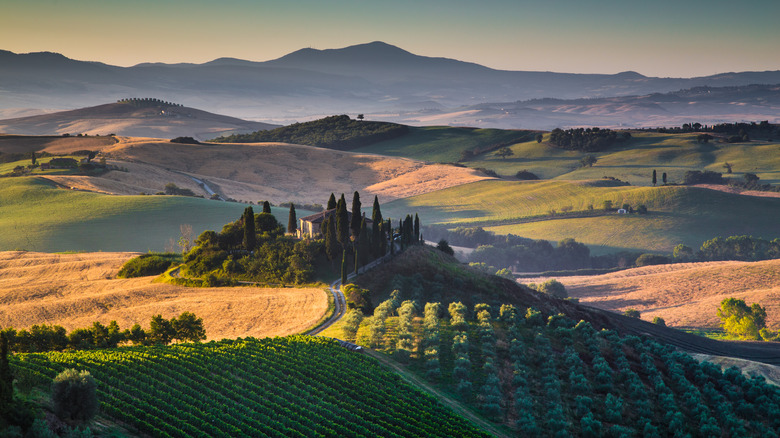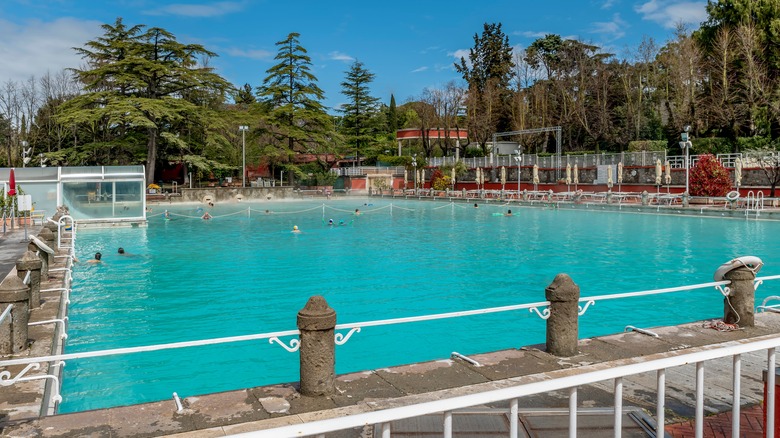Beautiful Italian Cities To Visit In The Fall
The country of Italy has long been a hit with travelers, and about 50 million visitors arrived here in 2022. Given the riches across the nation, it's no surprise that it is so popular as a destination. This is where to find a giant auditorium where gladiators fought that is almost 2,000 years old. It's also home to a tower that stands not straight up but at an odd angle, a sinking city built on the water, and some of the most magical countryside anywhere on the planet. And then there's the food, a veritable trove of delight.
During the peak tourism months of summer, Italy is busy from top to toe. In the fall, when the weather is wondrously pleasant, those numbers start to ease as kids return to school, and life returns to its routine, making getting around, getting a table, and getting into museums, less challenging. The list of places in Italy worth visiting includes many underrated tourist destinations all over the country, but some cities are especially alluring, thinned of crowds, and blessed with natural grandeur.
Agrigento
At this city in southern Sicily, the historical ruins are spellbinding, and its archaeological zone is on the Unesco World Heritage site list. More than 2,500 years ago, Agrigento fell under Greek rule, and proof of that is evident today in the Valley of the Temples where old Greek structures still stand. Parts of the site show the later influence of the Roman Empire, and for visitors wandering around, it's easy to make out the plot of the ancient city or the grand houses that once belonged to the upper classes of society.
For a great overview of the old part, take a stroll up the Colle di Girgenti, a hill that offers fine vistas of the ruins as well as the Mediterranean. Also be sure to make a trip to the Cattedrale di San Gerlando, whose intricate interiors exude history, and where the treasury is filled with striking artwork. The town's beaches in the fall, when the weather is fabulous, are perfect for a relaxing stroll.
Alba
Situated a short drive from the city of Turin, Alba promises foodies a fall delight. From early October to early December, the International Alba White Truffle Fair stages classes and cultural explorations and presents some amazing flavors, honoring the fragrant local fungal delicacy. Held each year, the event is anchored by a marketplace where travelers can purchase truffles from the region, sold directly by producers that are vetted by a panel of judges.
But truffles aren't the only food item on offer here, and other local products, including delectable wine, are available for purchase. This is another bonus for gourmands visiting this city in the Piedmont region. Because the festival takes place in the heart of the city, it can be included in an itinerary that takes in some of Alba's great sights, such as the neo-Gothic Cattedrale di San Lorenzo, which was constructed on the site of a former Roman temple and is located on a central piazza.
Amalfi
The name of this town is often uttered broader terms as a section of Italy's coastline, a wildly popular summer destination that calms down in the fall. The natural and cultural bounty of this stretch of coast is such that it became a Unesco World Heritage site. Amalfi's sheer cliffs and rolling hills as well as its architecture offer visual feasts that draw teeming crowds during hotter months.
Even more than a millennia ago, Amalfi was an important port from which ships carried timber to destinations around the Mediterranean and returned with precious metals and spices. Pieces of its deep history are visible to strolling visitors, with old city gates and slender streets of cobblestones that serve as a testament to its medieval layout, recalling a long-bygone era. There are also vestiges of old lookout towers, an ancient castle, and even naval arsenals that once protected fleets. For fans of shrines, the number of churches here is mind-boggling.
Campobasso
This city in the heart of the countryside is a couple of hours' drive northeast of Naples and counts a sturdy edifice as one of its main attractions. The Castello Monforte is more than 400 years old, though renovations over the years have updated its look, leaving few obvious traces of its medieval origins. Its large terrace provides excellent views of the city and the pastoral area beyond, which are especially alluring amid their fantastic fall temperatures. At the base of the castle, the Church of San Giorgio is even older, a sober, tasteful place of worship that locals and visitors alike revere for its longevity.
For a more thorough dive into the history of the region, the New Sannitico Provincial Museum sits within an old residence that belonged to nobles and has a good selection of archaeological treasures found in the region, such as old papers, statues, and everyday household goods that date back to the pre-Roman Empire era.
Catania
The weather in this coastal Sicilian town retreats from the heat and humidity of the summer to become cooperatively pleasant in the fall. Catania, however, deserves recognition for much more than its climate, and many of its enticements will hook the attention of visitors. A grand gate is the entry point to the Palazzo Biscari, a fine Baroque palace that showcases unadulterated opulence and ostentation. Visitors will see an impressive ballroom, numerous frescoes, and many mirrors around the building.
The Benedictine Monastery of San Nicolò is a huge complex, extremely attractive to wander, and while it is now part of the University of Catania, the public can still visit it. For some local activity and color, stop by the fish market, which has operated in the same location for centuries. Some of the city's most fascinating sights are underground, including old baths, a Roman amphitheater, and even a church, all of which are connected by tunnels.
Matera
In this southern city, the climate is far more amenable in the fall than the summer, which is a boon to anyone exploring the city's many outdoor attractions. Rocks are a recurring theme in Matera and form one of the city's central building blocks. For instance, the Casa Cava, a former quarry that now houses a theater, is a fascinating destination. There are also homes that were built inside caves, though many of them have since been abandoned due their unhealthy conditions.
A couple of shrines dating back to the 13th century are not to be missed — the Romanesque St. John the Baptist is one of Matera's most striking buildings, while its cathedral is also imposing, and visitors will also be able to see a church built into the rock elsewhere. Keen-eyed movie fans might recognize the city as a location for the filming of the most recent James Bond film, "No Time to Die."
Monselice
Located close to Venice, this walled city is near plenty of natural areas, making it a fine point for appreciating the countryside. It was also a key military outpost, with a fortress built on top of a steep hill as its main focal point. Getting up there is quite a climb, with a tower dominating its structure and views of breathtaking fall foliage along a winding pathway en route. While the fort was in use for many years, it now plays the role of a cultural touchstone, with old pottery, tools, pieces of silver, and other regional ancient items displayed within its walls.
Monselice has managed to retain an aura of medieval times, and its old churches will take visitors back centuries. One of its grandest destinations is the Villa Nani Mocenigo, which is the former home of an Venetian aristocratic family and features stately staircases and public spaces. Back outdoors, hiking and biking trails around Monselice let visitors savor the fall colors of the undulating Euganean Hills.
Otranto
The sense of living on the edge is palpable here in Otranto, which is almost the easternmost point of the country. On a clear day, it offers travelers views of Albania across the Adriatic Sea. Located in the region of Puglia, it has long drawn tourists for its waterfront location, gorgeous clear blue waters, and whitewashed buildings. During the summer, sun worshippers descend en masse, but come early fall, the sea is still warm and the beaches are less hectic.
Otranto is also famous for its rocky headlands, from which thrill seekers leap into the water. Away from the shore, the cathedral is a big draw especially for the intricate mosaic inside, which details stories from religion and mythology and is more than 800 years old. Travelers can admire the walls around the historic city center, a reminder of a time when peace wasn't always guaranteed. The alleys in this area are filled with shops, cafes, and bars and are fascinating to explore on foot.
Perugia
The capital of the region of Umbria has a rich past dating back to medieval times. There is plenty of culture here, thanks in part to the city's strong educational framework. Perugia has an esteemed university that has produced scholars for more than seven centuries, and the Conservatory of Music Perugia has existed for over 200 years. For overseas visitors keen on learning more about Italian, the Perugia Foreigners' University lures students who yearn to get a handle on Italy's language and culture from all over the world.
Ancient culture is also represented by the Rocca Paolina, a fortress that houses a city within it, full of homes, alleys, and other features. Travelers with a sweet tooth should time their visit for the huge Eurochocolate festival in October, the largest event celebrating the joys of chocolate on the continent, with pavilions, cooking demonstrations, and workshops all focused on this divine delight.
San Miniato
For a quintessential rural experience, San Miniato is a great place to visit. Olive harvests take place in the fall in the nearby countryside, and this Tuscan town also has a white truffle festival. San Miniato sits on a hill, and the rolling plains and fields of pastoral Tuscany, which are especially colorful in the fall, unfurl in all directions. It's also located in a well-worn tourist area between Florence and Pisa, making access a breeze.
The Rocca, or fortress, is set high up as a lookout point and should be a focus for any visit. For an example of a striking central square, Piazza della Repubblica fits the bill, with its curving walls where shopkeepers used to sell their wares. Today, though, the plaza is a public space that hosts markets and events. One event worth seeking out is the White Truffle Market Fair, held over three weekends in November. It is rife with cooking shows and truffles to purchase.
Sanremo
Not far from the French border and set on the Mediterranean, this city feels both old and new, and through November, the fall weather is a treat. Many come here to enjoy the gorgeous coastline, the hypnotic blues of the sea, and the pretty setting of verdant hills rising up behind the city. Set between two peninsulas — Capo Nero to the west and Capo Verde to the east — the former fishing village is now a tourist magnet, though not just for the beaches.
Strolling the old town is a joy, an area that recalls a much older era, with its vertiginous steps, small piazzas, and sheltered passages. The city also attracts gamblers to its casino, which is more than a century old and serves as a hub of activity during the peak summer season. Perhaps the most enjoyable aspect of Sanremo, though, is its nature, which is perhaps best exemplified by the flowers that grow all throughout its parks and carefully tended gardens.
Siena
This picturesque city in Tuscany has a striking central square that visitors overwhelm in the summer. However, it is pleasantly navigable in the fall. Siena's history is intricately tied to that of the Roman Empire. At one point, it was a military outpost during the rule of Emperor Augustus, which in time became a hub for merchants. Urban culture arrived in the form of palaces, imposing public buildings and spaces, and religious landmarks like its grand cathedral.
One of the most famous places in Siena is the Medici Fortress, the site of a former Spanish fort that was knocked down and reconstructed under the watch of Cosimo I de' Medici (a Tuscan noble), and finally finished in 1563. It's a huge, commanding structure that currently hosts stage performances and features ravishing gardens. The city's jewel is its historic core, a Unesco World Heritage site where travelers will find the Piazza del Campo. This is Siena's most beloved square, and its floor, which alternates between brick and white travertine, is watched over by the soaring Tower of Mangia.
Sorrento
October is the sweet spot for visiting coastal Sorrento, with great weather guaranteed and the tourist season still in full flow (it winds down in early November). It is easy to reach from Naples and is the kind of place where travelers can easily hang out all day at a cafe and watch the world slide by. Locals gravitate toward Piazza Tasso, a key square where bars and restaurants welcome regulars for a jolting espresso or a soothing tipple, and refined buildings line its perimeter.
There is the Palazzo Correale, whose blocky form contrasts with its sensuous archways. Or the Santuario della Madonna del Carmine, a bright church with intricate detailing on its facade. A visit here wouldn't be complete without sampling a Sorrento lemon, whether it's squeezed onto a grilled dish, added to a risotto, or mixed into a cocktail or liqueur. These large lemons are renowned throughout the country, especially for the intoxicating scent of their thick rinds.
Taormina
A major center on the island of Sicily, Taormina promises visitors breathtaking views of the countryside, the sea, and Mount Etna, which is one of the tallest active volcanoes in Europe.
During fall, the weather is gorgeous, with warm air and ocean water and astounding mountain foliage. Corvaja Palace, a former fortress that became the home of local government, makes for an entrancing image. Its inner courtyard and curved window frames date back centuries and evokes Middle Eastern architectural touches.
For even deeper historical context, Naumachia is an important Roman structure that still stands — an old wall with curved niches, it once served as a reservoir. The ravishing Piazza IX Aprile has an intricately checked floor, and its surrounding churches, green hills, and Mediterranean views make it a great place to drink in the area's beauty. For an incredible vista of Mount Etna, head to the Archaeological Park of Naxos, a site that brims with Greek ruins.
Trani
Spending time near the harbor at this fishing town set on a compact bay on the Adriatic Sea, travelers will feel an overwhelming sense of tranquility. One key stop here is the Trani Cathedral, completed in the late 12th century and drafted in a style known at Apulian Romanesque. The golden building is an amazing structure, with sharp rooflines and a soaring bell tower that was added some years later and reaches a height of more than 150 feet.
Casting your eye over the church, you will see cool archways, windows of rich, rose-hued glass, and, if you explore further, a trio of subterranean crypts. There, the remains of a saint are interred, and frescoes decorate the walls. There are even sturdy doors made of bronze that speak to the solid craftsmanship that went into the cathedral. Nearby, the Castello is an angular, modernist fortification that sits on the waterfront, a defining image of the city and a great place for quiet contemplation during the season's cool, crisp days.
Val d'Orcia
While Val d'Orcia is not actually a city, it is certainly worth a visit for its small Tuscan villages and rolling countryside. Its historic significance and natural beauty are such that it is also among Italy's Unesco World Heritage sites. The terrain is as varied as it is attractive, with plenty of hills, villages, and forts. During fall, the land and trees are ablaze with color.
Elsewhere, travelers will encounter dense foliage, small settlements, sun-baked farmhouses surrounded by carefully tended pastures, castles, rows of olive trees and grape vines, orderly, precise cypress trees, and a sense of consummate peace. Among the spots worth stopping for is San Quirico d'Orcia, a medieval town with stone homes, paved alleyways, and fabulous food and drink. It's a calming destination that is as remarkable for its simplicity as its ability to effortlessly transport a visitor away from their everyday life, in terms of both time and place.
Viterbo
Though it's only 50 miles from Rome, the city of Viterbo presents a rejuvenating break from the Italian capital. One of its star attractions is its complex of thermal baths at Terme dei Papi, just outside the city. Terme di Papi is renowned for its restorative hot springs, which are especially alluring as fall approaches and the weather cools down. The destination also has a rich papal history, and in addition to its springs, it features a hotel and restaurant, making it an easy place to spend a few days. However, this isn't the only thermal bathing spot in the area, and a number of other options are also close to Viterbo, including Bagnaccio.
Back in the city itself, Viterbo Underground is a place of great fascination, with tunnels that spread out from the city center, though only certain parts are accessible to visitors. Above ground, the city exudes classic Italian historical beauty, with its solemn churches and storied piazzas. Try to time a visit for the annual fall Chestnut Festival in the nearby town of Soriano, where parades and reenactments excite the senses.
